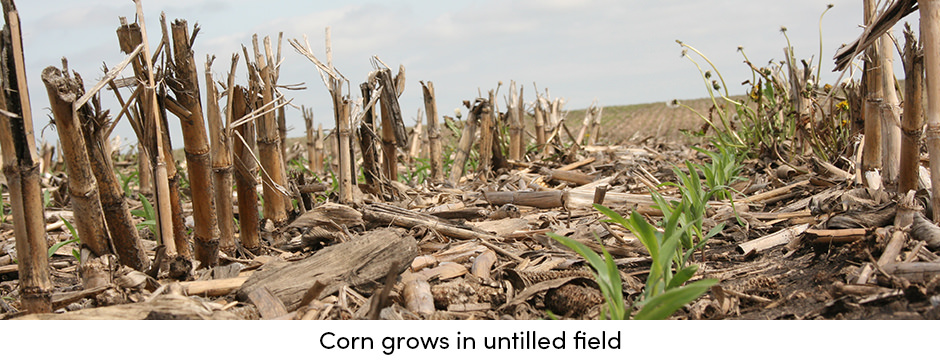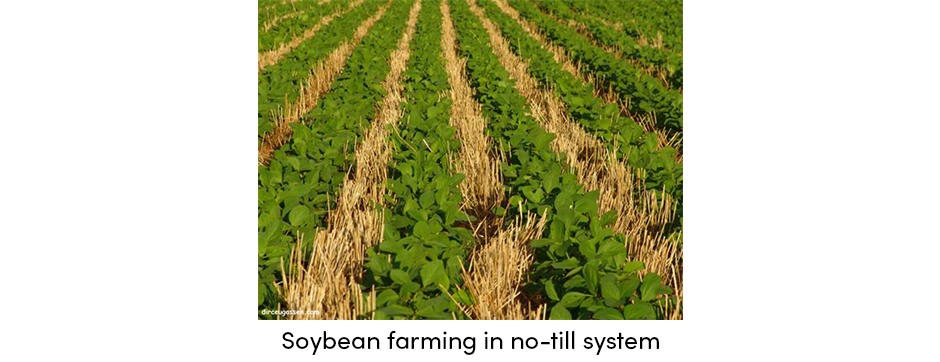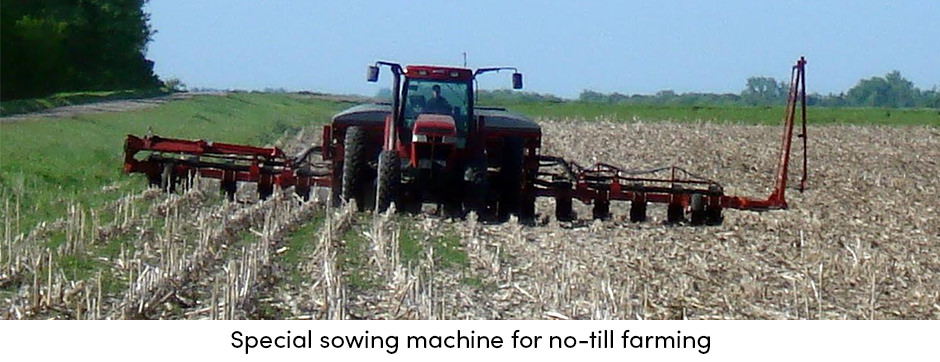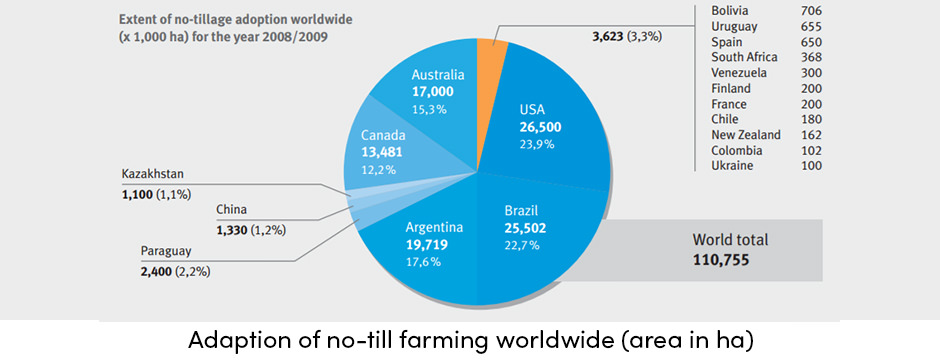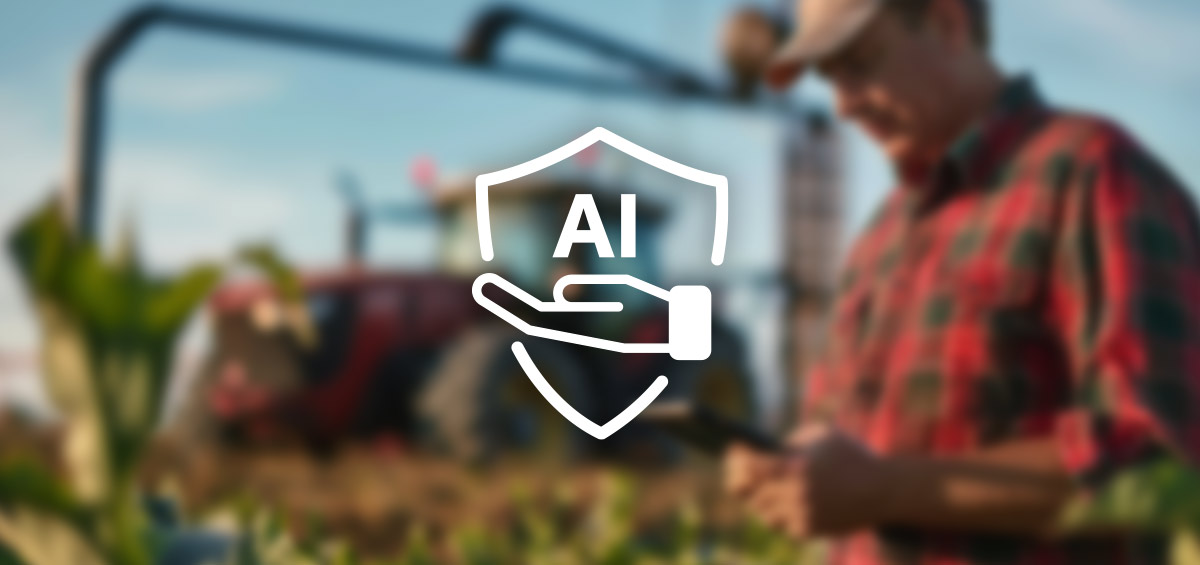A standard farm practice that focuses on soil preparation for growing crops includes soil tillage. Tillage helps manage crop residue and loosens the soil, creating a perfect sowing layer. The soil that is ready for sowing has an empty and unprotected surface. So, until crop emergence, there is a constant concern of possible soil erosion that could be caused by wind or water which would result in the loss of topsoil.
Why Practice No-till Farming?
From the very beginning, crop production and soil tillage have been coupled. Farmers couldn’t imagine crop production without soil tillage. In striving to protect the environment while producing crops, which would lead to achieving sustainability and reducing farming costs, farmers began practicing a new type of system – no-till farming or farming without plowing.
A no-till farming system, as an aspect of conservation farming, avoids the use of farm machinery and excludes soil tillage, preventing crop residue from being incorporated into the soil. Moreover, crops are sown in the field full of residue from the previous crop. No-till farming, therefore, includes:
- Minimal soil disturbance
- Crop residue left on the soil surface
- Direct sowing
- Crop rotation
- Soil carbon sequestration
- Reduction of GHG emissions from soils.
Crop residue serves as a vital component in helping protect the soil in order to mitigate the negative effects of climate change, such as the drying impact of the sun.
Soil tillage aerates the soil, reduces weeds, and mixes organic soil matter. Since these positive effects on soil can be also achieved without the tillage, farmers started to practice the no-till system. This farming type has no harmful effects on the environment; the natural soil life keeps the soil loose and fertile by itself.
Consequently, the main benefits of the no-till farming system are:
- Reduced soil disturbance – the no-till system requires only farm machinery that makes the least amount of passes, thus reducing the soil compaction and enhancing crop sprouting
- Soil health management– reduced or omitted soil tillage protects the soil and makes it more suitable for crop production
- Farming cost – the no-till system reduces work labor, water, machinery usage, and fuel. It requires 50-80 percent less fuel and 30-50 percent less labor than conventional farming
- Crop residue – residue protects the soil from negative environment effects, increases water infiltration, and reduces evaporation.
How to Manage No-till Farming?
No-till farming requires special farm equipment that is adjusted to sow seed over the crop residue on the soil surface. Farm practices which follow the harvesting of the previous crop include:
- Chopping the crop residue or leaving the mulch on the soil surface
- Sowing of seeds
- Crop nutrition and water management
- Crop maintenance
No-till farming includes various farm techniques, such as crop rotation and the planting of cover crops. Crop rotation reduces plant pest occurrence and enhances soil properties, while cover crops control weeds and enrich the soil with nutrients.
Negative Effects of No-till Farming
Even though no-till has been developed as a sustainable way to farm, one that will conserve the environment as well as the soil, it has been developed and implemented along with the industrialization of agriculture. Therefore, elements associated with the practice have been shown to have some negative effects, including:
- high input of agrochemicals
- higher use of genetically modified seeds
- expensive farm machinery
- possible monoculture farming
- slower crop germination and, therefore a reduction of the yield
- difficulty converting from conventional to no-till farming due to fear of possible crop failure and occurrence of new crop pests
Small farmers in developing countries, with a lack of resources and limited access to chemicals needed, in the past have been forced to use cheap chemicals which are harmful to the environment due to longer persistence in the soil. Finally, excessive herbicide use causes a variety of environmental problems, including adverse effect to the soil and water, which negatively affects wildlife in the area.
The Future of No-till Farming
The no-till farming system focuses on the soil’s health and less invasive crop production techniques. In aiming to produce enough food for the growing population, farmers are struggling due to increasingly difficult growing environments caused by climate change. No-till farming enables farmers to adapt to these new conditions and secure the crop yield.
Developed as a farming method meant to conserve soil and water, no-till farming takes into consideration good farm practices that are necessary to achieve global food demands.
Text sources: The Permaculture Research Institute || Organic Eprints || FAO
Image sources: University of Kentucky || IEASSA || Corn Corps

